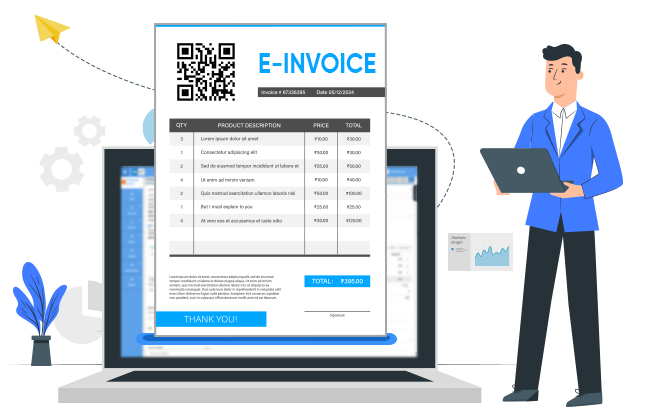The Ultimate FAFSA Checklist: What You Need To Prepare

Introduction
Welcome to our comprehensive guide on preparing for the Free Application for Federal Student Aid (FAFSA). This checklist will ensure that you have everything you need to successfully complete this important financial aid application. We understand that the FAFSA can be overwhelming, but with our expert guidance and this ultimate checklist, you'll be well-equipped to navigate the process with confidence.
Understanding the FAFSA
Before diving into the checklist, let's briefly understand what the FAFSA is and why it's so crucial for your college education. The FAFSA is an application that allows both current and prospective college students to apply for federal student aid. This aid comes in the form of grants, work-study opportunities, and loans. It's an essential step in accessing financial assistance for your education.
Gathering Personal Information
To begin the FAFSA process, you'll need to gather some personal information. Ensure you have all the information in your possession:
1. Social Security Number (or Alien Registration Number if you are not a U.S. citizen)
2. Date of birth
3. Permanent resident card (if applicable)
4. Driver's license number (if you have one)
5. Legal guardian information (if applicable)
Assembling Financial Documents
As the FAFSA requires detailed financial information, it's crucial to gather the necessary documents before starting the application. Here are the key financial documents you should have ready:
1. Federal income tax returns: Gather the most recent tax returns for you and your parents or legal guardians. If possible, use the IRS Data Retrieval Tool to import your tax information into the FAFSA directly.
2. W-2 forms: Collect all W-2 forms from employers for you and your parents or legal guardians for the relevant tax year.
3. Records of untaxed income: Include any documentation of untaxed income you or your parents or legal guardians may have received, such as child support, veterans' benefits, or disability payments.
4. Bank statements and investment records: Compile recent statements for any bank accounts or investments you or your parents or legal guardians may have. This includes checking, savings, and investment accounts.
Identifying Dependency Status
Determining your dependency status is crucial as it impacts the FAFSA requirements. You will be classified as either a dependent or an independent student. If you are a dependent student, you will need your parents' or legal guardians' financial information. Use the FAFSA Dependency Status Guide to determine your status.
Researching School Codes
Each college or university has a unique Federal School Code that needs to be included on your FAFSA. Research and compile a list of the schools you plan to apply to, along with their respective school codes. The FAFSA allows you to include up to ten school codes.
Stand out from your competitors by presenting invoices with a unique and professional appearance.
Invoice Temple is the ultimate invoicing solution designed exclusively for entrepreneurs.
Access a diverse selection of invoice templates that cater to different business needs and enhance your brand image.
Sign up and enjoy invoicing for free.
Available on google play store for android and PCs.

Determining Filing Status
When completing your FAFSA, you will need to indicate your filing status. The options include "Married," "Single," "Widowed," "Divorced," or "Separated." Choose the option that best reflects your current situation.
Completing the FAFSA Form
Now it's time to complete the FAFSA form. Follow these steps:
1. Create a FSA ID: Visit the Federal Student Aid website and create a Federal Student Aid (FSA) ID. This will serve as your electronic signature throughout the FAFSA process.
2. Access the FAFSA: Go to fafsa.ed.gov, and log in using your FSA ID. Begin a new application by selecting the appropriate academic year.
3. Enter personal information: Fill in your personal information, including your name, Social Security Number, date of birth, and contact information.
4. Add school codes: Input the Federal School Codes for the colleges you plan to apply to. You can include up to ten schools in your FAFSA application.
5. Answer dependency questions: Based on your dependency status, answer the series of dependency questions accurately. These questions determine whether you need to provide parental information on the FAFSA.
6. Provide financial information: Enter the requested financial information accurately. If you utilized the IRS Data Retrieval Tool, review the imported tax details and make any necessary corrections.
7. Review and submit: Once you have completed all sections, carefully review your FAFSA for accuracy. Then, sign and submit your application.
Reviewing and Submitting your FAFSA
After submitting your FAFSA, take the time to review and double-check all the information you provided. Errors or omissions may lead to delays in processing your application or even the denial of aid. Be sure to follow these key steps:
1. Review the Student Aid Report (SAR): Within a few weeks of submitting your FAFSA, you will receive a Student Aid Report (SAR). Review this document carefully to ensure all information is accurate.
2. Correct errors, if necessary: If you find any errors on your SAR, make corrections as soon as possible. Log back into your FAFSA account and update the necessary information.
3. Respond to requests for documentation: Occasionally, you may receive requests for additional documentation from the financial aid office of the school(s) you applied to. Be prompt in providing the requested information to avoid any further delays.
Following up and Tracking your FAFSA
To ensure your financial aid application is being processed correctly and efficiently, it's important to follow up and track its progress. Here are a few tips to help you stay on top of your FAFSA:
1. Check your email regularly: Be diligent about checking your email, as the financial aid office may send updates or requests for additional information.
2. Contact the financial aid office: If you have any concerns or questions, reach out to the financial aid office of the school(s) you applied to. They can provide valuable guidance and updates on your application status.
3. Stay organized: Keep all FAFSA-related documents and correspondence in one place. This will make it easier to locate crucial information and track your progress.
4. Set reminders for important dates: Mark deadlines and other key dates on your calendar to ensure the timely submission of documents and responses.
Conclusion
Completing the FAFSA can seem like a daunting task, but with this ultimate checklist, you're equipped with all the information you need to navigate the application process successfully. By gathering the necessary personal and financial details, understanding your dependency status, and meticulously completing the FAFSA form, you're taking a crucial step toward accessing the financial aid that can make your college dreams a reality. Remember to review, submit, and follow up on your application to ensure a smooth and efficient process. Good luck on your FAFSA journey!
Frequently Asked Questions (FAQs)
1. What is the deadline to submit the FAFSA?
The FAFSA deadline varies by state and institution. It's essential to check the deadlines for your specific schools and submit your application before those dates.
2. Can I make corrections to my FAFSA after submitting it?
Yes, you can log back into your FAFSA account and make corrections at any time during the application cycle.
3. Is it necessary to complete the FAFSA every year?
Yes, the FAFSA must be completed every year you will be attending college to continue receiving federal student aid.
4. Should I submit my FAFSA as soon as possible?
It's recommended to submit your FAFSA as soon as possible, as some forms of aid are awarded on a first-come, first-served basis. The earlier you apply, the better your chances of receiving maximum aid.
Also Read...




